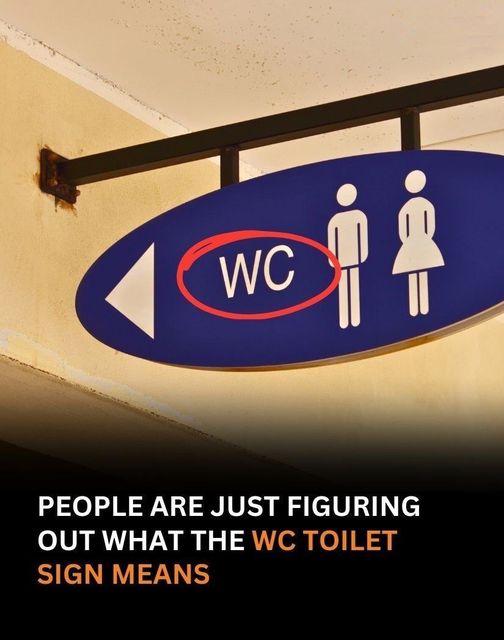Many people have been shocked to discover what the letters “WC” on toilet signs truly represent, despite encountering this term for years. In various countries, the term “WC” is commonly used to refer to a public restroom, but its origins are lesser-known, especially outside Europe. The abbreviation “WC” stands for “Water Closet,” a term that has historical roots tied to the early days of indoor plumbing.
Historically, in homes without modern plumbing systems, bathrooms were primarily used for bathing and were separate from the area where toilets were placed. As indoor plumbing became more common, many homes repurposed small closets or spaces as locations for toilets, hence the term “water closet.” Over time, this name stuck, and even today, the abbreviation “WC” continues to be used in many parts of the world, particularly in Europe.
A popular TikTok video, now deleted, explained this historical quirk. The creator shared that back when indoor plumbing was not widespread, baths were taken in a separate room, and people had to heat water manually before pouring it into tubs. When plumbing eventually made its way into homes, the term “bathroom” remained associated with spaces for bathing, and “water closets” referred to areas with toilets. As plumbing improved, the WC label became a catch-all term for restrooms without baths.
People online have expressed surprise at learning this fact. Comments such as “I can’t believe I’ve been living with a WC sign and had no idea why it was called WC” and “I was 23 years old when I learned!” illustrate how common the misunderstanding is, especially among younger generations. However, some users are amazed that this information wasn’t already widely known, with one person stating, “Surely everyone knows what WC stands for?”
The rise of modern technology and platforms like TikTok has made the dissemination of these small yet fascinating historical details easier than ever. The internet is filled with little-known facts like this, from the hidden features of shopping carts to the origins of product names like M&Ms. The “WC” acronym is just one example of how common words or symbols we encounter every day have fascinating backstories that most people are unaware of.
The term “water closet” originated in the 19th century when indoor plumbing began to revolutionize the way people lived. Before indoor toilets became the norm, most people had to rely on outhouses or chamber pots, which were placed far from the main living quarters due to hygiene concerns. As plumbing improved and made its way into homes, small spaces, often closets, were converted into toilet rooms. Since these were some of the few rooms equipped with running water, they were naturally dubbed “water closets.”
Though the term “water closet” is largely obsolete in everyday speech, the abbreviation “WC” remains a common label for public restrooms, especially in Europe and parts of Asia. In countries like the United States, however, other terms like “restroom,” “bathroom,” or simply “toilet” are more commonly used.
It’s fascinating how the meaning of words can evolve over time. A bathroom, for example, initially referred strictly to a room with a bath, but today, it can mean any room with sanitary facilities, including toilets. Meanwhile, the term “WC” has retained its original meaning, even if the term “water closet” has fallen out of favor.
This kind of discovery shows how history can influence language in ways that linger even after the original context is forgotten. The fact that a closet was once considered the most convenient place to install a toilet may sound odd today, but it made perfect sense at a time when indoor plumbing was a new and luxurious feature.
In today’s world, many things we take for granted have origins that most people are unaware of. For example, everyday items like the cheese grater or hooks on shopping carts have uses and features that were designed for convenience, yet many of these are unknown to the average person. Learning about these hidden details adds another layer of appreciation for the innovation and creativity that went into designing the tools and systems we use daily.
In the case of the WC sign, the historical context behind the term is both interesting and surprising to many. It serves as a reminder that even the simplest terms and labels can have deep roots in the past. Next time you see a “WC” sign in a public restroom, you’ll know exactly what it means and why the term has endured for over a century.
So, the next time you’re traveling through Europe or another part of the world where the WC label is common, you’ll be able to appreciate the history behind the sign. And if you’re ever quizzed about what “WC” stands for, you’ll be one of the few who knows the answer—it’s “water closet,” a term rooted in the history of indoor plumbing and the evolution of modern sanitation practices.
In conclusion, it’s little historical details like this that make learning about the past so intriguing. From the simple “WC” sign to the more complex systems that shaped modern living, history has left its mark in the most unexpected places. Knowing where these terms come from not only gives us insight into the past but also reminds us of how far we’ve come in terms of technology and everyday convenience.

